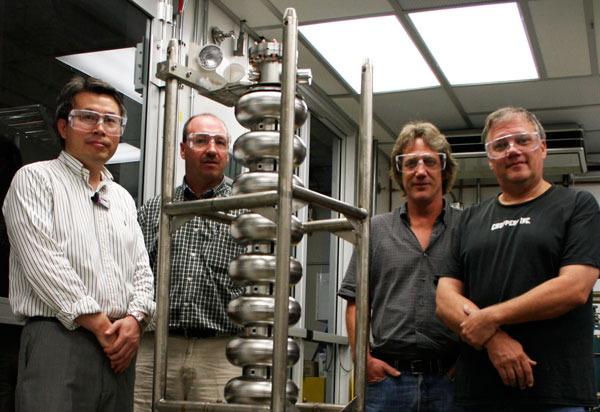American-Made SRF Cavity Makes the Grade
NEWPORT NEWS, VA, Sept. 17, 2009 –The U.S. Department of Energy's (DOE's) Thomas Jefferson National Accelerator Facility marked a step forward in the field of advanced particle accelerator technology with the successful test of the first U.S.-built superconducting radiofrequency (SRF) niobium cavity to meet the exacting specifications of the proposed International Linear Collider (ILC).
The cavity was developed as part of a DOE-funded R&D effort focused on developing technologies that would be required for an ILC, a proposed next-generation electron-positron collider that would enable scientists to explore matter at higher levels of energy.
Superconducting radiofrequency accelerator cavities are crucial components of particle accelerators or colliders, harnessing the energy that the collider pumps into a beam of particles. If it were built, the ILC would require about 16,000 niobium cavities, and vendors worldwide are vying to produce test cavities that meet the ILC's stringent performance goals. Superconducting cavities are also found in a number of accelerator facilities supporting Office of Science programs, and improved performance will benefit these programs as well.
"This is the first cavity built and processed in the U.S. that exceeds the ILC gradient specification established by the ILC Global Design Effort," said Rongli Geng, a staff scientist at Jefferson Lab and group leader of the Global Design Effort (GDE) Cavity Group.
The cavity was manufactured by Advanced Energy Systems, Inc. (AES), located in Medford, NY, one of several North American companies attempting to manufacture test cavities for the ILC. The cavity was processed, underwent final assembly and was tested at Jefferson Lab.
source:Jefferson Lab
